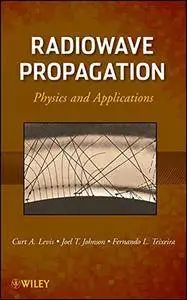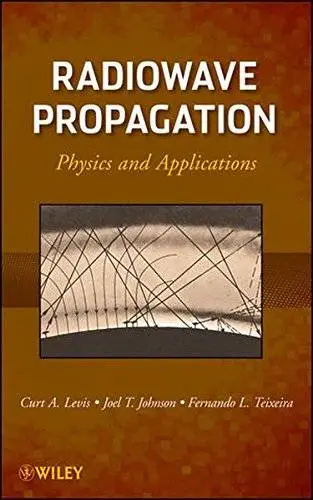Radiowave Propagation: Physics and Applications by Curt Levis, Joel T. Johnson, Fernando L. Teixeira
2010 | ISBN: 0470542950 | English | 320 pages | EPUB/MOBI | 7 MB/7 MB
2010 | ISBN: 0470542950 | English | 320 pages | EPUB/MOBI | 7 MB/7 MB
An accessible student-oriented approach to radiowave propagation
Propagation-the process whereby a signal is conveyed between transmitter and receiver-has a profound influence on communication systems design. Radiowave Propagation provides an overview of the physical mechanisms that govern electromagnetic wave propagation in the Earth's troposphere and ionosphere. Developed in conjunction with a graduate-level wave propagation course at The Ohio State University, this text offers a balance of physical and empirical models to provide basic physical insight as well as practical methods for system design.
Beginning with discussions of propagation media properties, plane waves, and antenna and system concepts, successive chapters consider the most important wave propagation mechanisms for frequencies ranging from LF up to the millimeter wave range, including:
Direct line-of-sight propagation through the atmosphere
Rain attenuation
The basic theory of reflection and refraction at material interfaces and in the Earth's atmosphere
Reflection, refraction, and diffraction analysis in microwave link design for a specified terrain profile
Empirical path loss models for point-to-point ground links
Statistical fading models
Standard techniques for prediction of ground wave propagation
Ionospheric propagation, with emphasis on the skywave mechanism at MF and HF and on ionospheric perturbations for Earth-space links at VHF and higher frequencies
A survey of other propagation mechanisms, including tropospheric scatter, meteor scatter, and propagation effects on GPS systems
Radiowave Propagation incorporates fundamental materials to help senior undergraduate and graduate engineering students review and strengthen electromagnetic physics skills as well as the most current empirical methods recommended by the International Telecommunication Union. This book can also serve as a valuable teaching and reference text for engineers working with wireless communication, radar, or remote sensing systems.



